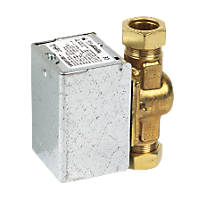A zone valve does not need to be some thing like this
this
is also a zone valve, the first is digital i.e. on/off and has a micro switch built in, the second is analogue and uses wifi to transmit its state.
I had the discussion with my plumber, with all motorised TRV heads why do I need a traditional motorised valve, and I decided since my granny flat is rarely used it was better to have the traditional motorised valve so there was a definite off. Also there was a hard wired switch telling the system when off, I was having problems with reverse flow, but could have simply used one way valves.
I could also switch pumps on/off, which was the way it was controlled before I bought the house. The problem is I have needed to fit an adaptable box with relays
due to lack of micro switches in the motorised valves, a real pain, I would have preferred to have one pump and two motorised valves, but the valves work pump and relay and relay works the boiler. However my boiler is simple on/off.
So with a boiler which can modulate, you want analogue controls, you don't want to turn off/on to control temperature, you want up/down, to control when heated on/off to control how much heat up/down. And I struggled with this with last house, the wall thermostat used a mark/space ratio to control boiler output which was completely unsuitable for the boiler, every time a boiler is turned off any heat in boiler goes out of flue, and when turned on again it will turn on flat out, so all the cleaver modulation may as well not be there.
So back to basics, we put the on/off wall thermostat in a entrance level room with no doors to outside, no alternative heating, and normally kept cool, and it's job is simply to stop boiler cycling when weather warms up, it does not control room temperature, if we want a wall thermostat to control room temperature we use an analogue type like opentherm to tell boiler to modulate output.
The same applies to electrical systems, we start with design, then we have installation, followed by inspection and testing, with electrics we even have three signatures, but the design is done before the installation not after. So if designed for wifi control that is what you need to fit. I am sure the plumber was not doing some modern art, and he was following some standard design, question is what standard design? Simple answer is ask him, get a copy of the design which will include both plumbing and wiring.







